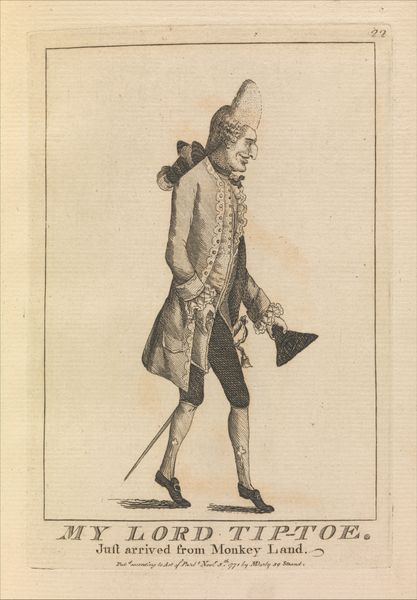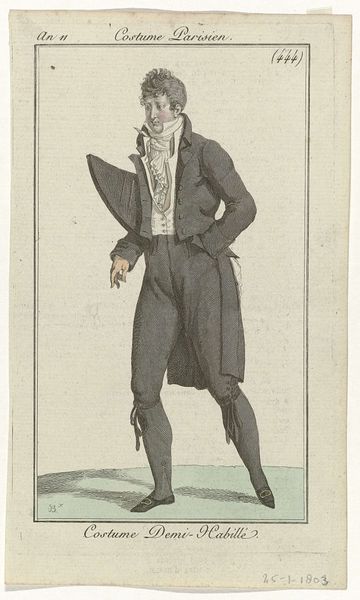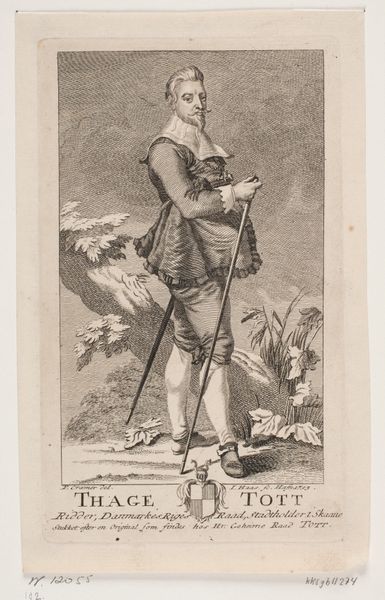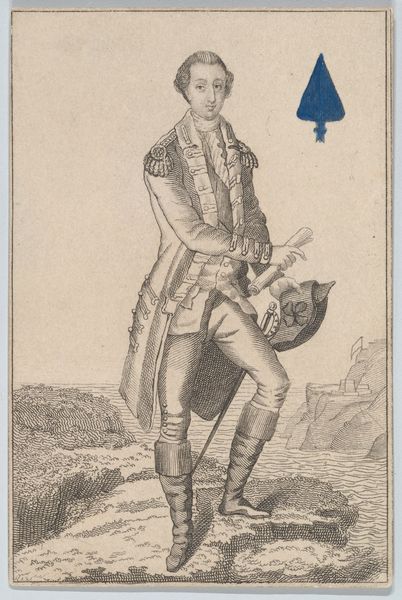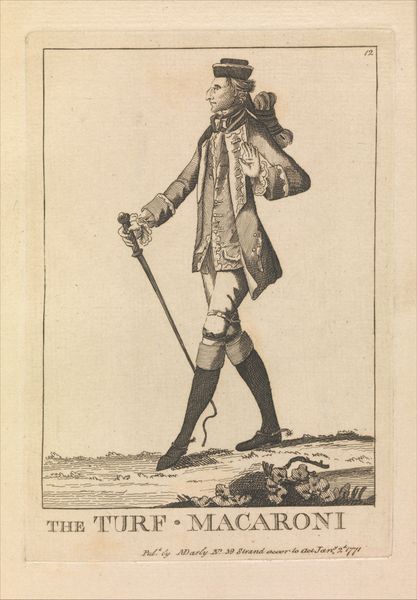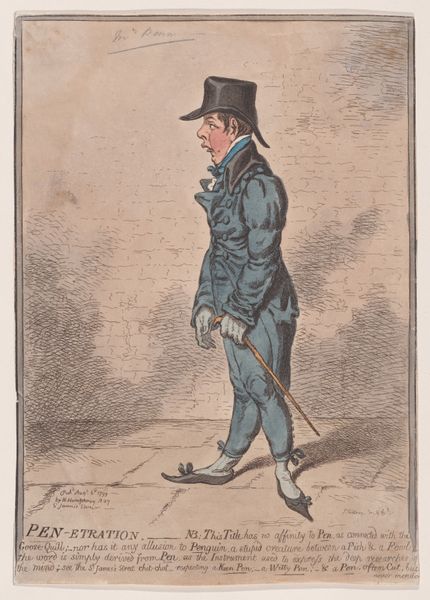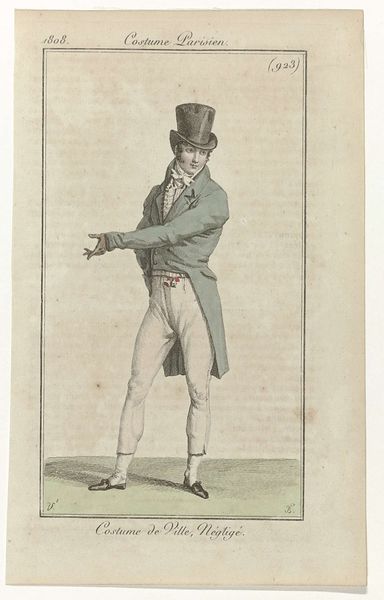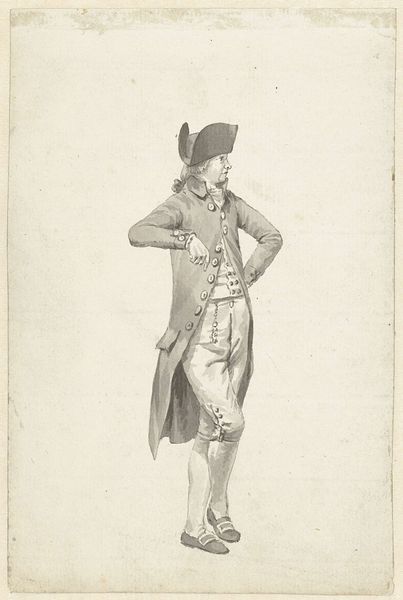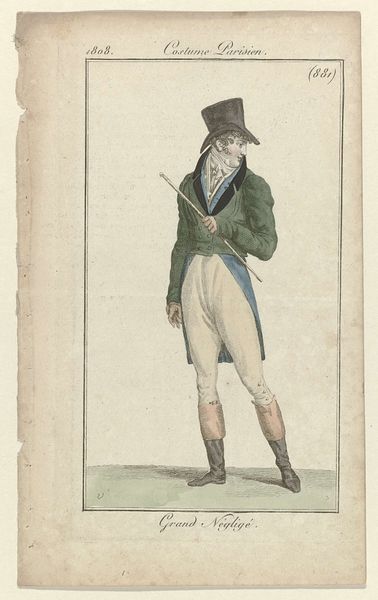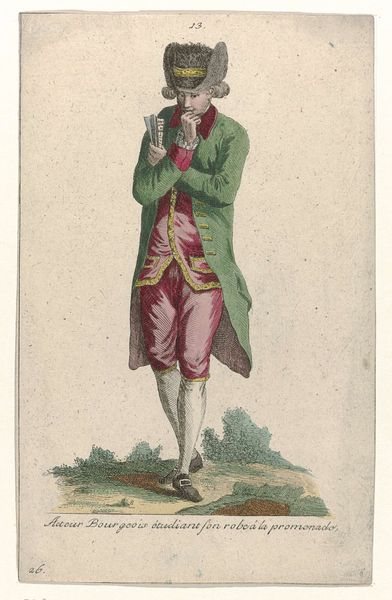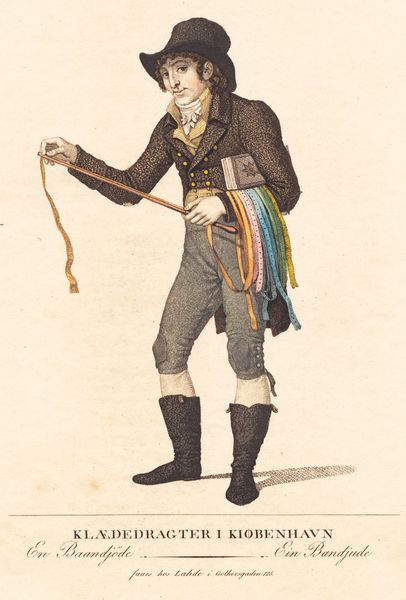
lithograph, print
#
portrait
#
lithograph
# print
#
caricature
#
caricature
#
historical photography
#
famous-people
#
line
#
history-painting
Copyright: Public domain
Curator: It strikes me first how unsteady this man seems. The colors are washed, but the lithograph itself is crisp, detailed… and look at how he totters. Is he carrying a golden scepter…or perhaps a heavy burden? Editor: We’re looking at "Man of the Day No.61 - Caricature of Lt.Col.Lord Charles James Fox Russell," a lithograph printed in 1873 by James Tissot for Vanity Fair. Part of a series of prints that featured prominent public figures of the day. The subtitle reads: "This fell sergeant—strict in his arrest". Curator: So, a caricature, definitely emphasizing the… weight of his position, right? The scepter, almost comically large, suggests authority, but the slumped posture hints at the exhaustion that comes with power. It’s like a bittersweet visual poem about duty. Editor: Exactly. Caricature in prints like these served an important social function. They critiqued power, poked fun at the establishment, and provided accessible commentary to a wide readership. Tissot captured the era’s personalities but through a very particular lens, amplifying traits, sometimes to flattering, sometimes, well, not so flattering effect. Curator: He's got this melancholy air about him despite the gaudy gold. Look at the eyes. They tell a story of, dare I say, quiet disappointment? It’s what draws me to it, this little seed of vulnerable humanity buried beneath layers of social armor. I imagine there is biting wit here, but with a sensitive touch. Editor: That contrast between the outward show of power and internal vulnerability gets to the heart of successful satire. And what’s crucial is understanding who consumed these images. Vanity Fair was aimed at the upper echelons of British society, people who knew Russell or at least knew of him, meaning that the caricature and its impact relied heavily on shared cultural understanding. Curator: It’s quite ingenious to think these images might've actually fueled conversation around powerful elites. To make these sorts of anxieties feel quite relatable and visible! Editor: Absolutely. This wasn’t just art for art’s sake, but a deliberate engagement with the political climate of the time. Curator: So much to chew on, from a simple seeming image. Power, duty, social critique—Tissot tucked a lot in this fellow's stooped frame. Editor: Indeed, a print like this helps us see the multi-layered relationship between representation, power, and public opinion in the Victorian era.
Comments
No comments
Be the first to comment and join the conversation on the ultimate creative platform.
